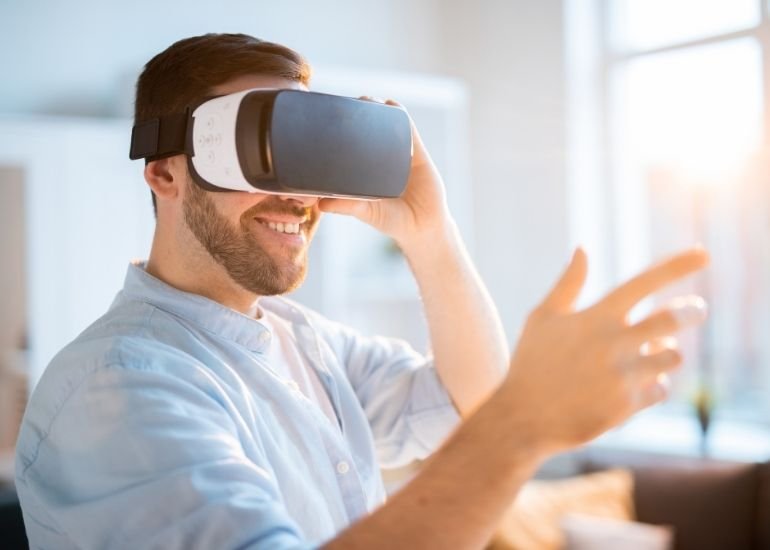Ever since the first VR systems were devised back in the 60s, we’ve witnessed exponential progress in virtual reality technology. Now, in the wake of the novel “metaverse” and the advancements in graphics and computing power, virtual reality is more “real” than ever before! Explore the intriguing world of virtual reality headsets and how they work and discover the fascinating evolution of this technology.
How Do VR Headsets Work?
VR headsets work via displays placed at a very short distance from the eyes. They come equipped with accelerators, gyroscopic sensors, and magnetometers that track the wearer’s movements to create an illusion of being in totally different surroundings. Some of the most advanced VR headsets can even track eye and head motion.
The head-mounted displays comprising the headset show images created through software applications. These applications are powered by a relatively potent graphics processing unit (GPU). This unit responds to the commands transmitted by the different sensors and other critical components like accelerators. These interactions allow the wearer to be “immersed” in their virtual environment of choice. Moreover, they allow wearers to interact with the VR headset, either with the aid of a controller or through body motions.
How Are VR Headsets Tested for Quality Assurance?
As we explore virtual reality headsets and how they work, it’s imperative to discuss how they’re tested for quality assurance. After all, a significant part of their appeal comes from their crystal-clear resolution and graphics. To start, VR displays must be measured according to specific safety and quality standards.
Modern measurement systems are endowed with innovative technology that accurately scans and portrays a display’s metrics. Testers utilize the data collected to determine whether the displays installed on the headset comply with the current safety demands. This is crucial, as it ensures the headsets are safe and will not harm the user.
How Has VR Technology Evolved?
In the oldest days of VR technology, it was common to find complaints of motion sickness after a VR session. This was explained by myriad factors. Poor ergonomic value, lack of proper immersion, and “sensory conflicts” between the eyes, the brain, and the body were among the most problematic factors of early VR technology.
However, there have been numerous improvements in this field over the years. For example, modern displays can offer up to 180-210 degrees of surrounding content in the user’s field of view. To this day, this is still short of the 220 degrees that the human eye can catch. But still, it’s impressively close. Further, in recent years, “frame rates” have also been heavily prioritized by VR developers.
This is likely due to studies suggesting that VR devices that don’t reach 90 frames per second (FPS) are prone to provoke nausea and disorientation, among other side effects. This still isn’t something that’s been proven beyond doubt. However, experts in the field are working tirelessly to ensure that VR headsets can be enjoyed without the risk of these symptoms.
To summarize, modern VR technology has been focused on revamping the field of view, resolution, frame rates, and color fidelity in the hopes of breaking the barrier between the virtual and real world. They are also working hard to reduce health hazards so that VR tech becomes increasingly accessible. Hopefully, this brief overview shed some light on how VR tech works, how it’s tested, and what’s being done to further the evolution of this innovative technology.

